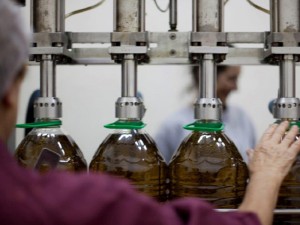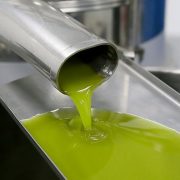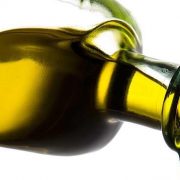Producing 69% of the world’s production, the EU is the largest producer of olive oil
The European Union is the first producer, exporter and consumer of olive oil in the world. However, due to its high economic value compared to other food products, olive oil is considered at high risk of non-compliances and fraud. For producing Member States, the EU framework for conformity checks effectively contributed to improve the quality of the products on the market and to reduce the prevalence of fraudulent practices.
Those are among the key findings of the ‘Study on the implementation of conformity checks in the olive oil sector throughout the EU’, published today by the European Commission
The EU has in place specific regulations to ensure that regular conformity checks are done at national or regional level. Member States are responsible for organising and performing these checks.
The study first gives an overview of the EU olive oil sector as well as the current situation in terms of conformity checks and how they operate. It then gives an assessment on to what extent the EU framework for conformity checks enables the achievement of objectives such as ensuring consumer protection, fair trade practices in business-to-consumer relationships, and the effective functioning of the internal market. Finally, the study identifies best practices at national level which could contribute to improving the overall system.
The EU is the largest producer of olive oil at global level, accounting for 69% of the world production. In the EU, there are nine producing Member States: Spain, Italy, Greece, Portugal, France, Slovenia, Croatia, Cyprus and Malta. They account for a total of around 5 million hectares of olive groves, most of which are dedicated to olive oil production. Spain accounts for more than half of the total EU area under olive groves.
Spain is the biggest producer of olive oil in the EU: from 2015/16 to 2017/18, on average, it accounted for 63% of the whole EU production. In the last 3 years, the average production in Spain reached 1.3 million tonnes per year. Almost the totality of the production is obtained in four Member States: Spain (63%), Italy (17%), Greece (14%) and Portugal (5%) together cover around 99% of the production in the EU.
Among non-producing Member States, Germany is among the largest consumer, accounting for around 4% of the total EU consumption. Although olive oil production levels ensure self-sufficiency, the EU has a leading role on the international market, both as an importer and an exporter of olive oil.
Specific EU legislation ensures that the objectives of the system of conformity checks on olive oils are met. The olive oil regime is integrated into the Common Market Organisation (CMO), which includes for example rules for support to the olive oil sector, and a set of specific definitions, designations and sales descriptions that are relevant for the olive sector.
Marketing rules include rules on packaging, labelling, cooperation between operators and control authorities, and control of labelling and penalties.
According to the study, the most common infringements are the marketing of virgin olive oil as extra virgin olive oil, or the marketing as “olive oils” of blends of other vegetable oils (sunflower, corn, palm, rapeseed, etc.) with olive oil.
Regarding the achievement of objectives of the EU framework for conformity checks, the study found that it ensured the adequate consumer protection and fair trade practices in business-to-consumer relationships. However for the objectives of ensuring a level playing field, effective functioning of the internal market and fair trade practices the study indicated that these objectives have been achieved only partially, as they vary in accordance with the specific national context.
The study also highlights gaps and problems in the current conformity check system. Among those, it found that main organisational problems and gaps relate primarily to the coexistence of, and coordination among, several national (and in some Member States, also regional and/or local) competent authorities for the planning and the performance of conformity checks. Another obstacle identified by the study is a lack of resources either in terms of staff or in terms of funding. The latter hampers the achievement of the system’s objectives.
















